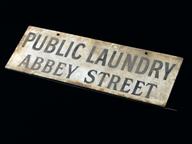

Laboratory kit used in the INSTINCT and ATACCC COVID-19 surveillance programmes
- Made:
- 2018-2020 in Europe, China and unknown place
DGP Pathoseal 95 biohazard bag numbered 21044292 containing pair of nitrile gloves, Greiner Bio-One 10ml in 1/10ml Cellstar sterile pipette number 607 180/10ml, Greiner Bio-One 25ml in 2/10ml Cellstar sterile pipette number 760 180/25ml, Greiner Bio-One 50ml tube with a screw cap and conical bottom, 2 clear plastic test tubes, 2 Greiner Bio-One 1ml Cryo.s tubes with screw cap part of the essential lab equipment used in the INSTINCT and ATACCC COVID-19 surveillance programmes, undertaken from 2020 at Imperial College's NIHR Health Protection Research Unit (HPRU) at St Mary's Hospital, London
Within this bag are essential pieces of laboratory kit used to help analyse samples for people in the study. The long thin pipettes are used for adding specific amounts of liquid to samples to help isolate, wash or transfer cells from one place to another. The blue topped tubes are used hold blood samples which are then placed into a machine known as a centrifuge – a laboratory machine that separates out parts of a fluid – in this case blood. Known as cryogenic vials, these tiny tubes are used to store immune cells from sample. When frozen in liquid nitrogen the cells can be used up to five years later. The clear tubes or FACS (Fluorescence Activated Cell Sorting) tubes are used to hold cells which are then examined in a cytometer – a machine which adds colours to cells to help researchers identify which type of immune cell is present. Gloves are an essential part of Personal Protective Equipment to protect people holding and analysing samples.
INSTINCT (Integrated Network for Surveillance, Trials and Investigations into COVID-19 Transmission) and ATACCC (Assessment of Transmission And Contagiousness of COVID-19 in Contacts) were two community-based cohort studies in which contacts of COVID-19 cases in Greater London were identified and recruited from 10 May 2020 through 31 March 2021. The studies were funded by National Institute for Health Research.
Details
- Category:
- Public Health & Hygiene
- Object Number:
- 2022-1443
- Measurements:
-
overall (25 ml pipette): 375 mm x 40 mm x 20 mm,
overall (10 ml pipette): 375 mm x 25 mm x 15 mm,
overall (capped tube): 115 mm 30 mm,
overall (cryo.s tube each): 42 mm 12 mm,
overall (plastic tube): 75 mm 12 mm,
overall (envelope): 322 mm x 210 mm
overall (gloves): 235 mm x 210 mm
- type:
- laboratory kit




